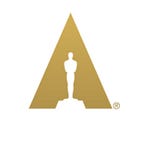Getting Guests to the Oscars on Time
A Q&A with the show’s transportation coordinator
On February 24, while you’re thinking about the red carpet, the performances and who’s going to go home with an Oscar, Norm Kinard is thinking about valet tickets. And limos. And traffic. Kinard, who runs Highland Parking & Transportation year-round, manages all aspects of transportation for the Oscars. This includes around 500 valet cars, 650 limousines and even more press and support staff vehicles. It also means managing at least three off-site parking locations, each with their own needs and personalities.
Kinard’s career began in 1993 as he was finishing up college. “I was working for a valet company and my first experience at the Oscars was as a valet attendant,” he said.
“I wore a uniform: red jacket and a black bowtie, which is still the uniform that attendants wear.”
At the time, the Oscars were held at the Dorothy Chandler Pavilion and all the valets would march out onto the street before the show.
“There were probably about 100 of us and we got a round of applause from the audience before we parked the cars.”
Fast forward to 2019 and Kinard is already deep into preparations for this year’s Oscars.
The Road to Oscar Sunday
“There’s a lot of preparation that goes into planning and staffing and permits and securing lots and communications… It actually starts in 2018,” Kinard said of this year’s show.
“The city is the first line. They dictate what happens with regards to public streets and lights and the freeway. They play an integral part of this whole operation.”
As anyone who lives in or around Los Angeles may notice, the city starts closing streets weeks prior to the Oscars.
“They’ve got to build an entire red carpet on Hollywood Boulevard! So there’s a tremendous impact through Hollywood and the surrounding areas as far as traffic.”
Then, there are the vehicles themselves. Where does Kinard hold hundreds of cars during showtime?
On the valet side, guests arrive to the intersection of Hollywood and Highland, where attendants take their vehicles to park inside the complex.
Meanwhile, limos are stationed at the Hollywood Bowl. Drivers stay there for the duration of the show, where they’re given a meal and hot coffee.
“We set up televisions so that they can enjoy the show while they’re waiting in the lot,” Kinard said. “Also, they may have a client who is up for an award so they need to understand how their client is going to get back into the car. Are they going to want to go to another afterparty? Or maybe they didn’t win and they want to go home.”
“It’s important for the chauffeur to understand what headspace their passenger is going to be in and what to expect for the rest of the night.”
Over the years, the community of drivers and staff has grown familiar. “There are tons of people that have been doing this just as long as I have,” he added.
Between limo coordination and valet, Kinard works with over 160 personnel. “We’re also running a significant amount of buses and support vehicles from various locations,” he added.
Expecting the Unexpected
The Oscars team keeps an accurate count of guests and credentialed staff, so Kinard doesn’t often run into issues with too many vehicles. “But there are things that are out of our control—weather, traffic problems—that affect arrivals and departures.”
As of late, he said, the most common issue has been rain.
“Keep in mind, valet and limos arrive at the intersection of Hollywood and Highland and it’s open-air. So when we do have rain during that three-hour window of arrivals on the red carpet, we have to make a contingency plan.”
The transportation team has umbrellas on hand, which they offer to guests, before taking back to a central location for redistribution.
And then there are mechanical surprises.
“We have situations where cars break down and I have to quickly gather a bunch of valets and push the car out of the way so we can keep moving.”
The one surprise Kinard didn’t expect? “The time that someone arrived in an Oscar Mayer Weinermobile.”
It’s Showtime
Just as the Oscars are about to begin, this year at 5 p.m. PT, Kinard can breathe a sigh of relief — sort of. “We know the time the show is supposed to go on and what time we need to be done with our job. Once the streets are cleared up and there are no more valet cars coming and no more limousines arriving, it’s halftime for me, but that is typically the most rewarding time.”
“I look around, I see my team — everyone’s dressed very smartly — and we can all exhale knowing that we did the main part of our job, which is to get everyone in safely and on time.”
At the end of the night, roughly between midnight and 3 a.m., comes the bigger challenge. “We’ve been working all day and now our responsibility is to get everyone out safely — that includes guests and a lot of support staff.”
“Teams are tired and drivers are tired. It’s the end of the night and you still have to get thousands of people somewhere.” But Kinard and his team, with ample preparation and decades of experience, always do.
This interview is part of “Only I Know,” our series dedicated to taking Oscar fans behind the scenes with some of the key players that make the show happen.
